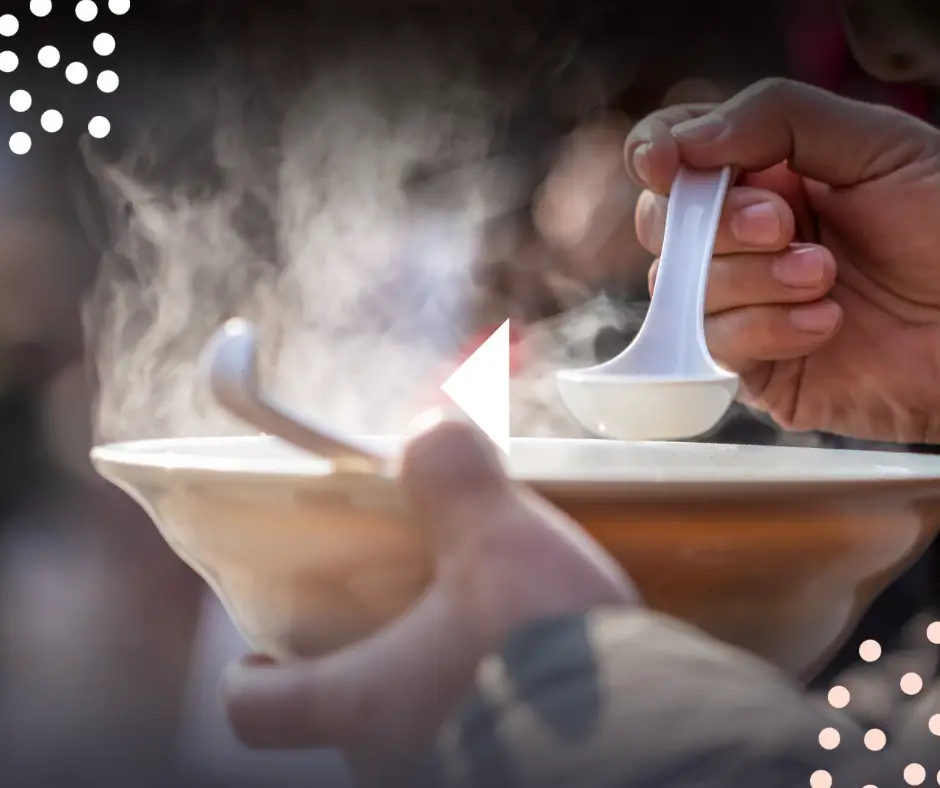If you’re planning on refrigerating your soup, it’s important to cool it down properly before you put it in the fridge.
This is because bacteria can grow rapidly in food that is held in the “danger zone” between 40 and 140 degrees Fahrenheit.
So, how long should you cook soup before refrigerating it?
In this article, we’ll discuss the importance of cooling soup safely and the factors that affect how long it takes to cool soup.
We’ll also provide some tips for cooling soup quickly and easily.

How Long To Cool Soup Before Refrigerating?
This might seem like a technicality, but cooling your soup before refrigerating is an important step that ensures both the safety and quality of your delicious concoction.
Pouring hot soup directly into the fridge can raise the fridge’s internal temperature, increasing the risk of bacterial growth and spoilage in other foods.
Moreover, hot soup in the fridge will take longer to cool down, staying longer in the ‘danger zone’ of 40°F to 140°F where bacteria can multiply quickly. To avoid this, it’s best to cool your soup no more than 2 hours after taking it off heat.
How Can You Cool Your Soup Efficiently? Here are a few methods:
Use an Ice Water Bath
By placing your pot of soup into a larger container or sink filled with ice and water, you create a cold environment that helps to quickly lower its temperature. Remember to stir frequently for faster heat release until the soup cools down to 70°F or below.
Divide into Shallow Pans
Transferring smaller portions of soup into shallow pans or containers allows more surface area exposure which aids in quicker cooling. Stir occasionally as you let it cool.
Include Ice in Your Recipe
For this method, make a thicker soup by reducing the water content in your recipe. After cooking and while still hot, add ice to bring down its temperature rapidly. Stir adequately for even distribution.
Try Cooling Paddles
These are water-filled plastic paddles that can be frozen and used like large stirring spoons to help cool soups safely and quickly. They’re available online or from restaurant supply stores.
Once cooled to around 70°F or below, transfer your soup into an airtight container for refrigeration. Leave it uncovered until it reaches 40°F or below before sealing tightly.
Can You Put Warm Soup In The Freezer?
While you might be tempted to shove that pot of still-warm soup into your freezer for quick cooling, it’s actually not a great idea.
Doing so can disrupt the temperature equilibrium of your freezer, causing already frozen foods to partially thaw – a situation that opens up potential avenues for bacterial growth and spoilage.
Furthermore, warm soup takes longer to freeze evenly and rapidly enough to prevent unappetizing ice crystal formation due to slow freezing.
So, what is the best way to freeze your soup?
Firstly, cool your soup safely and promptly post-cooking like we have outlined above.
Once cooled, decant the soup into freezer-safe containers.
Remember not to fill them all the way up as liquids expand when frozen.
Leaving that little extra space helps avoid container cracks or spills in your freezer!
How Should You Reheat Soup So That It Is Safe To Eat?
Bringing your delicious soup back to piping hot temperatures doesn’t take a lot, and doing it correctly ensures it’s as safe as it is tasty.
First off, if your soup is frozen solid, we need to thaw it.
This can be achieved by moving it from freezer to fridge for an overnight or at least a 12-hour spell.
If you’re pressed for time, your microwave’s defrost setting or placing the container in cold water (which should be refreshed every 30 minutes) are quicker alternatives.
Next step, reheating.
The method you choose depends on both the nature of the soup and how much you’re dealing with.
For large batches, heating over the stove does the trick while thick and creamy soups come back to life beautifully in the oven.
For smaller portions or a quick fix, pop that bowl in the microwave.
To ensure food safety, heat your soup until it registers at least 165°F across multiple spots when tested with a food thermometer.
Stirring often during reheating promotes even distribution of heat and sidesteps any unwanted scorching at the bottom.
If using a microwave, loosely cover the bowl with a lid or plastic wrap and remember to turn it midway through heating.
Once piping hot, serve up immediately! If you won’t be serving right away, keep your soup above 140°F until you do.
Leaving reheated soup at room temperature for more than 2 hours might lead to bacteria multiplying – something we want to avoid.
Lastly but most importantly: only reheat once! Repeated heating can compromise both taste and safety.

